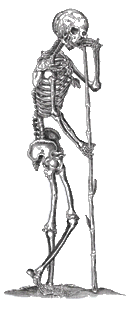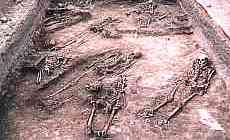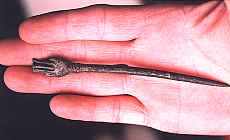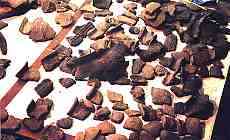




Giecz
Contemporary Giecz is a small village in central Wielkopolska, whose settlement tradition goes back to the early Middle Ages. It lies on the remains of an 11th century trade settlement. This settlement, along with a nearby, mighty defensive stronghold and the adjacent burial ground is a significant archaeological complex. Together with similar ones in Lednica, Gniezno and Poznań, it was a major political and economic center of the newly emergent Polish state in the 10–11 centuries.
Since the 60's, archaeological works have been carried out intermittently in the stronghold's interior, culminating in the sensational discovery of a superbly preserved 11 century Romanesque church in 1996. Intense agricultural activity in the nearby field has intruded into many early medieval graves. For many years, plowing brought to the surface pieces of human bones and numerous potsherds that are now scattered throughout the area. In 1999 the First Piasts Museum archaeological team began excavations on the site, demonstrating the historic value of these severely endangered remains. Financial support to continue rescue excavations was granted by the Dept. of Protection and Management of the Archaeological Heritage Office.
Archeological works carried out since 1999, every year reveal new burial finds. Graves are placed in rows, with a number of skeletons still intact. Most of them are in an extended position, with the arms along the sides, a few with their hands upon the pelvis. Some of the burials differ from this standard, with the bodies laid on their side or face down. Some graves contain the remains of mothers with children. All bodies are oriented on an E-W axis, with their heads pointing West, the direction of the setting sun, so typical of early Polish Christianity.
Many graves contain offerings; such as iron knives, bronze bracelets, earrings, glass beads and clay vessels, which may have been filled with food. Several coins allow for precise dating of the burial place to the second half of the 11 to the 12 century AD.
Among the most valuable artifacts is a bronze stylus, a tool for writing upon waxed tablets, in all probability belonging to an early medieval scribe. Such a unique artifact constitutes an exceptional find in Poland, bearing witness to the contact of the young Polish State with the Christian elite of the West.
An unexpected find of the 1999 season was the discovery of an earlier settlement beneath the level of the cemetery itself. Every subsequent season also reveals archaeological features such as open earthen structures, hearths, storage pits, and rich culture layers, which are dated to two habitation phases:
- 8 – 9 century AD,
- 10 – to the middle of the 11 century AD.
The first phase reflects human occupations prior to the building of the royal stronghold in Giecz and corresponds to the times of the legendary ancestors of the first Piasts. The second phase was witness to the building and use of the stronghold, the latter playing the role of an auxiliary settlement. According to written medieval sources at the middle of the 11 century, the Czech Prince Brzetysław invaded Giecz. The remains of this attack, the ravages of war, form a thick layer of charcoal, topping the settlement's stratigraphic sequence. This place was never resettled. The dead buried in ashes and ruins gave it new dimension and purpose, beginning a new tradition for the local community — the cemetery.
In the year 2000, archaeological research in Giecz received no further governmental funding. Support was granted by the First Piasts Museum, Lednica and the Slavia Foundation. At the same time, Giecz became the project of the Slavia Foundation Archaeological Program.
Every season brings new fascinating discoveries such as skeleton burials with various mortuary goods, remains of a wooden medieval road running through the settlement, the children's gravesite sector or a variety of features of the early medieval settlement. We are seeking those interested in exploring human remains from the cemetery in Giecz! We welcome everyone, including those who can profit most — students of physical / forensic anthropology.
|
* * * more about Giecz * * * (please, see the Polish page too) Plan of the cemetery in Giecz for the year 1999–2002 |
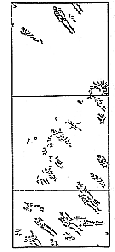
|

|
